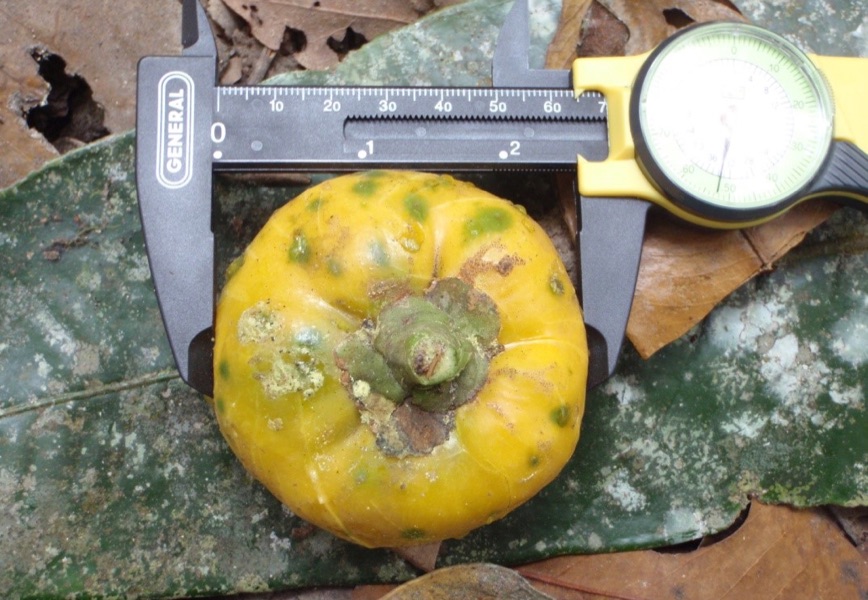Diverse assemblages of seed-dispersing megafauna once existed in Asian rainforests. Today, elephants are the only megafaunal seed disperser remaining in many regions once occupied by Sumatran rhinos which have undergone a dramatic range reduction in the past 100 years.
In a study published in Biotropica, researchers from Xishuangbanna Tropical Botanical Garden (XTBG) and their international collaborators review knowledge on seed dispersal by the Sumatran rhino, using newly collected datasets along with published and unpublished research collected mainly from the 1960s to the 1980s. They proved that rhinos and elephants played different roles in dispersing seeds according to the traits of the plant species.
The researchers tried to determine the plants, and fruit traits once serviced by the ecologically extinct Sumatran rhino. They also identified other animals that have been recorded dispersing seeds of megafaunal-syndrome fruits that were noted to be rhino-dispersed.
From a two-month field study (Sumatra), local ecological knowledge (Peninsular Malaysia), and published and unpublished accounts, the researchers consolidated information on fruit consumption, seed dispersal, and fruit traits.
They found that the critically endangered Sumatran rhinoceros is a proven or likely disperser of at least 79 plant species. Rhinos dispersed seeds from a broad range of fruit and seed sizes. The large fruits that fall from canopy and subcanopy plants to the forest floor are probably deliberately consumed by the rhinos. “Most of the fruits eaten by Sumatran rhino were more than 40 mm wide,” said Ahimsa Campos-Arceiz of XTBG.
In comparison, the fruits from understory plants (herbs, shrubs, and small trees) were usually substantially smaller, displayed a greater variety of colors, and might have been consumed intentionally or unintentionally along with the foliage of the plant.
About 77% of species were dispersed by both elephants and rhinos; in particular, they shared the dispersal of most megafaunal fruits. However, fruits dispersed by rhinos (but not elephants) tended to be smaller and capsular (the latter including some fleshy capsular fruit).
“Rhinos were the only known disperser for 35% of the megafaunal-fruit genera. The demise of this magnificent animal has likely resulted in loss of seed dispersal mutualisms and more complex seed shadows of megafaunal plants than can be achieved by elephants,” said Ahimsa Campos-Arceiz.
Contact
Ahimsa Campos-Arceiz Ph.D Principal Investigator
Center for Integrative Conservation, Xishuangbanna Tropical Botanical Garden, Chinese Academy of Sciences, Menglun, Mengla, Yunnan 666303, China
E-mail: ahimsa@xtbg.ac.cn

Measuring a megafauna-dispersed fruit in Way Kambas National Park. (Image courtesy of Firmann Aldy)

